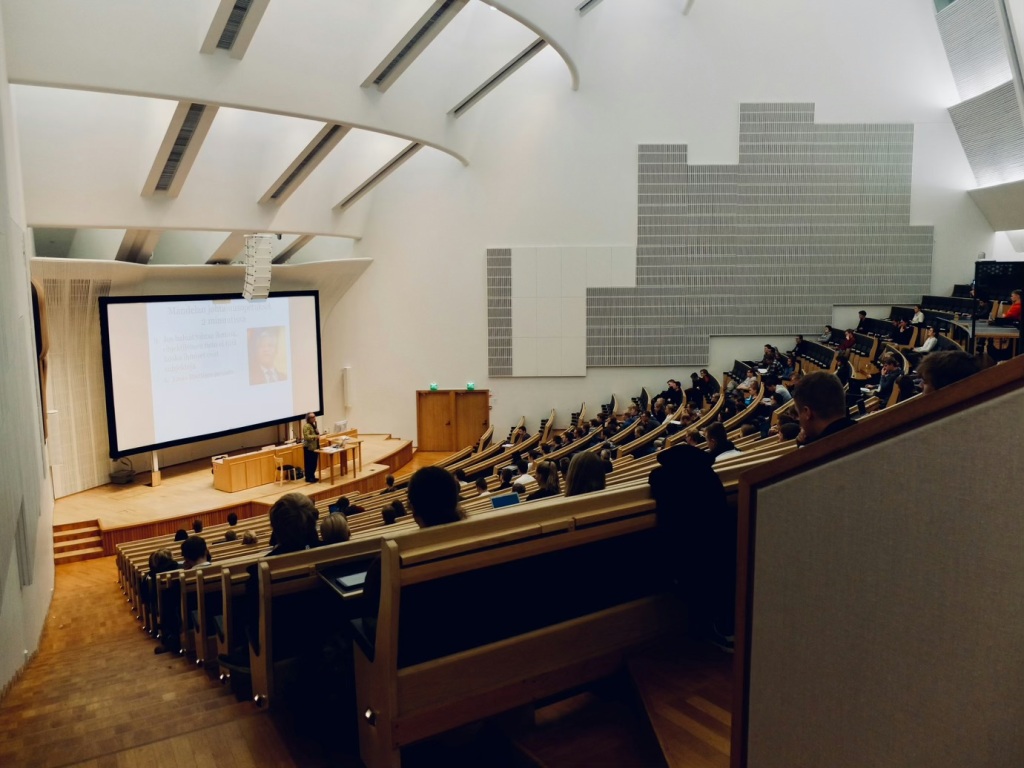LILY ANDERSON / ASST. OPINION EDITOR
I have noticed a trend in my classes this semester that I have not been fond of. In the fall, most of my classes were tech-free, and I welcomed this setup with open arms. It was nice to have a break from the constant use of technology outside of the classroom. On the flip side, a decent amount of my professors this spring rely heavily on their PowerPoints for lectures.
To be more precise, multiple professors read directly from their slides — and only from their slides. I have experienced this both in technical classes based on specific concepts and in many core curriculum classes or other entry-level classes. Not only does this make class boring, but it also wastes our time. I could be twice as productive on my own with a copy of the slide show. I have even seen slides with outdated and years-old information, suggesting that professors haven’t double-checked their material before class. Usually, my peers seem just as bored as I am and get distracted by other work or online browsing.
This apparent disinterest tends to make professors frustrated, which is entirely understandable.However, what they don’t understand is that times are changing. While PowerPoint may have been a game changer in the past, it is not the best method for engaging students anymore. Instead of catching their attention, it gives them an excuse to online shop or text their friends. Moving forward, professors need to rethink their teaching methods and start making changes in the classroom. In my experience, the most exciting and effective classes don’t use slides and are predominantly tech-free. The professors aim to start discussions instead of lecturing and break up the time block with small activities.
In an era of rapid technological advancement, the higher education landscape stands at a crossroads. It is hard to define when and where technology should and shouldn’t be used. There is a significant gap between traditional teaching approaches and the demands of today’s students.
In a Fizz poll of The USD community posted by The USD Vista on Feb. 20, 79% of poll participants reported that at least a few of their teachers read directly from their slides. I find this statistic to be shocking. While I knew I wasn’t alone in my frustration, I didn’t expect nearly 4/5 of students polled to have this problem.
This issue isn’t only happening at our institution. The national Student Voice survey, an online survey developed by the Kentucky Department of Education as a resource for all academic institutions, similarly reports students’ frustration. It found that 55% percent of college students feel that the teaching methods used in class don’t work for them, and 51% percent think experimentation with teaching styles would significantly improve their education. Expecting all students to prefer a lecture-heavy class style run by slides is outdated.
Psychological research conducted by EU Business School has shown that students’ attention spans differ depending on the lecture’s form and that an active learning environment leads to more engagement. Students have reported that their preferred active learning styles are: case studies, small-group discussions, game-based learning, polls and brainstorming. Interactive lectures are clearly what students find to be the most beneficial, and professors should accommodate this. While it may require extra lesson planning, the change these different methods could provide would be well worth it.
Not only would switching up teaching styles benefit students, it would also benefit professors. What frustrates me most is that I was taught to avoid reading directly from slides throughout my education. Teachers required slide shows with extremely brief bullet points and urged us to know the information well enough to explain it without relying on the presentation. When professors do precisely what I was taught not to do, education standards become blurry. I know that my professors have worked hard and dedicated many years to their craft, so they seem to be selling themselves short. By creating more engaging lectures, they could better share the expertise they spent years cultivating.
I hope professors see students’ frustration as a means for change, not a call to double down. Instead of continuing to stick to old and known methods, it is time to embrace the unfamiliar. I envision a future where classrooms are centers for exploration and discovery, every student is engaged and every mind is working. I want to be excited for class and ready to learn instead of bored by the time I step through the door. Professors, if you’re reading this, I appreciate your dedication and am privileged to be in your class, but please ditch reading directly off the PowerPoints and engage with your students instead of a board.
Slide-heavy lectures can lead students to lose interest in what the professor is teaching. Photo Courtesy of @domlafou/Unsplash





Leave a comment